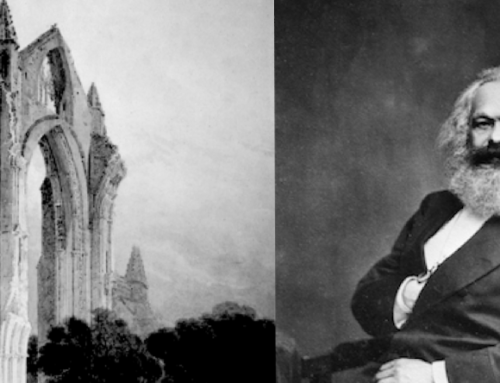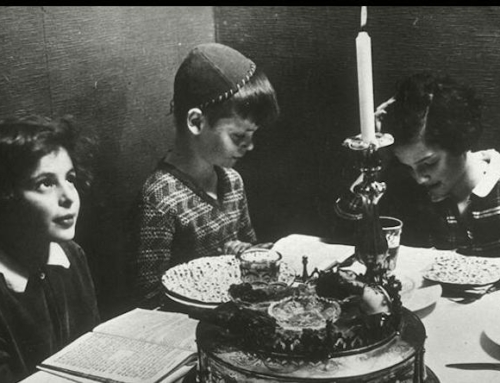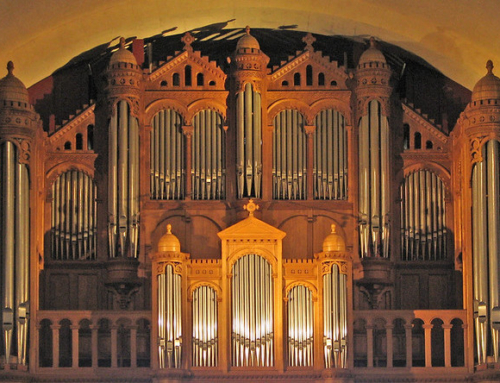The “Imagineers” at the Walt Disney Company know exactly what they are doing. At each Disney theme park, small nozzles across the site waft sweet and immersive scents into the air. Litter is picked up as soon as it touches the ground, keeping the idyllic streets of Downtown Disney impeccable. The vast series of underground tunnels keep illusion-breaking physical plant staff off the main grounds. It’s Mickey’s world, and you’re just living in it.
Perhaps the biggest contributor to this phenomenon is the strategic placement of walls around the parks. Surrounded by Radiator Springs and California Adventure, you are unaware that outside is just downtown Anaheim.
At the risk of comparing the Catholic Church to the House of Mouse, I’d like to propose that something similar happens inside the walls of a monastery. Standing in the cloister garden, the only hint of the outside world is the blank sky. The four walls do, in a sense, shut the monk into a different world.
This kind of comparison could be used as a critique of religious life and the Church in general. People might claim that Catholicism presents a sort of fantasy world, shutting people in from reality. What the Church calls “sin,” the world calls “natural.” The monastery can be misinterpreted along similar lines: men are cut off from the real world to be hypnotized with endless repetition of prayers and motions. To the world, the Catholic Church is just another Disneyland, and the priests, monks, and other religious are the adults who just can’t seem to grow up.
For Catholics, this criticism can lead to doubt. Has our Catholic faith put up four walls around our minds, blinding us to what is really out there?
The answer to this dilemma lies in the very comparison which sparks the question. The purpose of Disney’s walls is not hard to see—selling t-shirts, photographs, and memories to earn your loyalty to the Disney brand. But inside the monastery, there is nothing to be bought or sold. There are no snowglobes, keychains, plushies, or souvenir cups. Rather, these walls tell the monk to look deep inside himself, and see the reality which is both more profound and more hidden than the outside world, and infinitely more giving than any corporate family brand: God.
Inside these walls, removed from the world’s distractions, the monk sees his own human nature in vivid detail. On this nature, freely given to him from conception, the monk finds the fingerprints of the world’s engineer. But at the same time his eyes are opened to his own fallenness and sins, as were those of Adam and Eve when they ate the forbidden fruit. But searching more inward, he finds the great love which comes from the world’s Father. This great love is Jesus Christ, present in the Eucharist, itself surrounded by the walls of a tabernacle. Consuming this love and being transformed by it, the interior world of the monk becomes a chamber of what is really real.
Ultimately, we take our families to Disneyland to “get away from it all.” But the trip ends, and the reality returns. But the monk takes a trip to discover the meaning of “it all,” deep inside the walls. His trip ends only with death, when he returns home to the realest reality—the almighty Triune God.
✠
Photo by Br. Thomas Nee, O.P. (used with permission)







